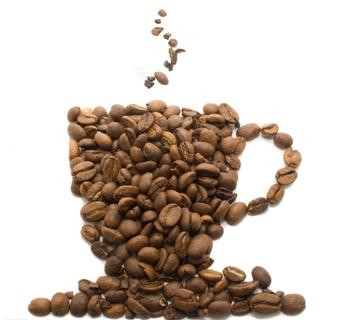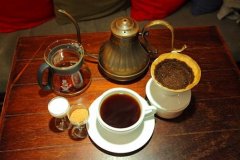High-quality coffee brewing technology novice how to make hand-brewed coffee
Hand-brewed coffee, as a new favorite of the "third wave of coffee reform", has become a way for baristas to express their individualization. Different baristas use hand extraction to show their own understanding of coffee. There is no unity, and there is no absolute good or bad. It all depends on the performance of the taste, just like cooking a meal. Although Japanese hand-brewed coffee has a long history and precipitation, different styles are also different, and it also attracts customers with different tastes. Therefore, the first thing is to find the way that baristas like and extract their own personality, and then infect customers and cultivate their tastes.

However, in any case, only by thoroughly understanding the factors affecting the extraction of hand-brewed coffee can we make a cup of perfectly extracted coffee and avoid customer dissatisfaction because of the failure of our extraction when we get a good bean. So what are the factors that affect the flavor of hand-brewed coffee?
Today, Chongqing Breista Coffee West Dian Liquor training Institute will summarize several factors affecting hand-brewed coffee extraction. Through professional study and production training, baristas can train baristas to control the various factors of coffee extraction. The following are several major factors that affect hand-brewed coffee extraction summarized by Chongqing Brista Coffee West Dian Liquor training Institute:
1. Water quality
two。 Water temperature
3. Coffee beans
4. Powder quantity
5. Grinding degree
6. Cloth powder
7. Hand punch pot
8. Filter cup
9. Stew and steam
10. Brewing flow
11. Extraction quantity
twelve。 Preheating
13. Barista
[water quality] at present, there are the following kinds of water used to make coffee: pure water, pure water and soft water. Pure water does not contain any other solute, so it is more soluble, and more of the coffee powder will be extracted when brewing coffee. Purified water can also be understood as mineral water, which removes harmful substances such as bacteria and chlorine, and leaves mineral elements. the solubility of this kind of water is weaker than that of pure water during extraction. at the same time, the minerals in the water can regulate the flavor of coffee, so the flavor of coffee extracted by different mineral water is also slightly different. Soft water is the water filtered by the water softener, which does not contain calcium and magnesium ions, but at present, it is generally softened by the replacement of sodium ions, so the content of sodium ions in the water will be very high, and the extracted coffee is easy to be salty.
[water temperature] the regulation of water temperature on the extraction of coffee is obvious, but also one of the most direct factors. Generally speaking, when other factors remain the same, the deeper the roasting degree of coffee is, the lower the water temperature is; the fresher the coffee is, the lower the water temperature is; and the finer the coffee is, the lower the water temperature is. The range of water temperature is generally 80 ℃ 96 min.
[coffee beans] includes raw bean origin, roasting degree and freshness. The origin determines the height of the coffee, which is shown by good roasting, and the freshness determines whether you retain all the flavors you could have. Therefore, a cup of coffee beans with excellent flavor must be inseparable from these three factors.
[powder quantity] in fact, the amount of powder not only affects the final amount of extraction, it would be a big mistake to simply think that 160g coffee is extracted from 10g powder and 320g coffee is extracted from 20g powder. The amount of powder not only affects the extraction amount, but also affects the steaming efficiency, water temperature, extraction flow, extraction speed and so on, and finally affects the extraction rate. According to the author's extraction experience, in general, the more the amount of powder, the easier it is to underextract.
[grindness] after roasting, the cell structure of coffee changes, there are many cavities, filled with gas, including many aroma components. The degree of grinding actually determines the degree of difficulty of extraction. The finer the degree of grinding, the easier it is to extract the taste of coffee. Then we should determine the rough grinding degree according to the roasting degree and freshness of coffee, and then adjust it according to the extraction results in order to achieve the balance of extraction.
[cloth powder] this is a very easy to overlook, because hand-flushed cloth powder is not as important as Italian cloth powder, but it is also a key factor in determining extraction consistency. First of all, the flatness of the powder surface determines the uniformity of steaming and extraction; secondly, some people like to pat the filter cup to increase the density of the cloth powder, which will affect the extraction flow and extraction speed. A good powder habit will reduce the error of the barista's extraction results each time.
At present, there are all kinds of hand-made pots on the market, and many baristas do not have a more objective understanding of how to choose hand-made pots. The differences between hand pots are nothing more than the following points: first, heat preservation. Take the most classic kalita fine-mouth palace pot as an example, because the upper cover uses the closing design, the temperature loss during extraction will be less, which is 3-5 ℃ less than that of Tiamo with a thermometer, and can bring a more stable water temperature. Second, the water flow, there is no doubt that the water flow of the long mouth is finer and more uniform, but it is also a bit inadequate when the water flow needs to be increased in the post-extraction stage, on the contrary, the pot needs more experience in flow control. Third, the thermal insulation of ceramics is better than that of metal, but some metal pots are made into double layers and the inside is empty, so the insulation will be better. At the same time, it will preheat more quickly than ceramic.
[filter cup] experienced baristas all know that different filter cups require different extraction methods, and the flavor of the same bean is also different, which is about the design of grooves and outlet holes of the filter cup. The longer and deeper the grooves are, the better the exhaust and fluency are, and it is not easy to appear volcanic bubbles when steaming. The extracted coffee tastes more smooth and easy to show high-quality acidity; on the contrary, the extracted coffee tastes thicker and thicker. It's easy to show the sweetness and sweetness of coffee. The larger the outlet hole is, the faster the extraction speed is, and it is more suitable for coffee with deep roasting degree.
[steaming] two points should be paid attention to here, one is the amount of steaming, and the other is the time of steaming. The amount of steaming water must be just right, just dripping a few drops, the appropriate amount of water is conducive to the full steaming of all coffee powder. Special attention should be paid to the thick powder layer near the middle and the thin powder layer around it, so it is appropriate to inject more in the middle when steaming and injecting water to ensure that the coffee powder in the lower layer can be soaked. The time of steaming should be determined according to the degree of baking, the amount of powder, water temperature and other factors. Generally speaking, the longer the steaming time, the more substances extracted.
[brewing flow] what we are familiar with is usually divided into one-time water injection and three-stage water injection, which are actually suitable for different filter cups. V60 is more suitable for three-stage water injection because the drainage is too fast, otherwise it is easy to lack of extraction. Kono and melita are more suitable for one-time water injection, otherwise it is easy to over-extract. The impact of the height of the water will stir the coffee powder, will enhance the extraction, and easy to inject bubbles, in order to reduce instability, we usually use the same strength as a massage to inject hot water, so the coffee powder will be more comfortable. There is the speed of the circle, will also have a stirring effect, want you to extract the coffee more mellow and full and do not know the excessive extraction, or calm down to steady water injection. Therefore, making coffee by hand is also a pleasure for self-cultivation.
[extraction amount], that is, the final amount of coffee, is an important factor affecting the concentration of coffee. The concentration range of gold cup extraction is 1.15% Murray 1.35%, but the concentration may vary more depending on the taste of different guests. On the basis of achieving the gold extraction rate, adjusting the extraction amount is only the adjustment of the coffee concentration, and the flavor of the coffee will not change. Do not in order to achieve the amount of extraction, clearly has reached the gold extraction rate but still in the water injection, resulting in excessive extraction.
[preheating] No matter what utensils are used to make coffee, preheating is essential. Baristas should form a fixed habit. I won't repeat it here.
[baristas] different habits and preferences of baristas will also bring different results to the extraction of coffee, but as long as you develop a fixed extraction habit and solidify this variable as much as possible, it will be more beneficial to get a stable taste and show your personality.
Important Notice :
前街咖啡 FrontStreet Coffee has moved to new addredd:
FrontStreet Coffee Address: 315,Donghua East Road,GuangZhou
Tel:020 38364473
- Prev

Netizens' experience of milking in the technology of coffee flower drawing.
1. An easy-to-use method for beginners to fill about half a cup of cold meal milk; spray off the remaining water in the steam pipe; insert the milk at an angle of 30-40 degrees, and insert it at the center 1 to the left (or to the right); turn on the steam, first rotate the milk fully, slowly move the cups down, do not let the steam nozzle away from the milk too much (easy to produce coarse bubbles); when you feel warm (or think that milk bubbles)
- Next

Coffee pull flower Italian coffee machine how to make good milk foam
Hand-foaming requires equipment for double-layer foam cups or single-layer flower cups, 2 mocha pots and 2 sets of mocha pots. [the mocha pot is used because it can make espresso, although there is no way to compare with machine-brewed espresso. Therefore, the mocha pot is the choice of friends who do not have a machine and want to try to pull flowers. Machine foam needs equipment Tiamo flower cup coffee maker with steam pipe
Related
- What is the meaning of lactic acid fermentation with coffee bean treatment?
- How to judge the state of foam by sound?
- How does the latte pull out the unicorn pattern? Come to get for a little trick to improve the flower pull!
- Will flower pulling affect the taste of the latte?
- Do you know the history of coffee?
- The difference between honey treatment and sun washing what is raisin honey treatment?
- What kind of milk can a novice use to make coffee foam to keep the foam longer? The correct method and skills of milking tutorial sharing
- Why do washed coffee beans taste sour? Flavor characteristics of washed Coffee
- Introduction to the skill of how to practice the size and height of water injection around the circle of hand-brewed coffee
- How do beginners practice coffee flower drawing from scratch?

